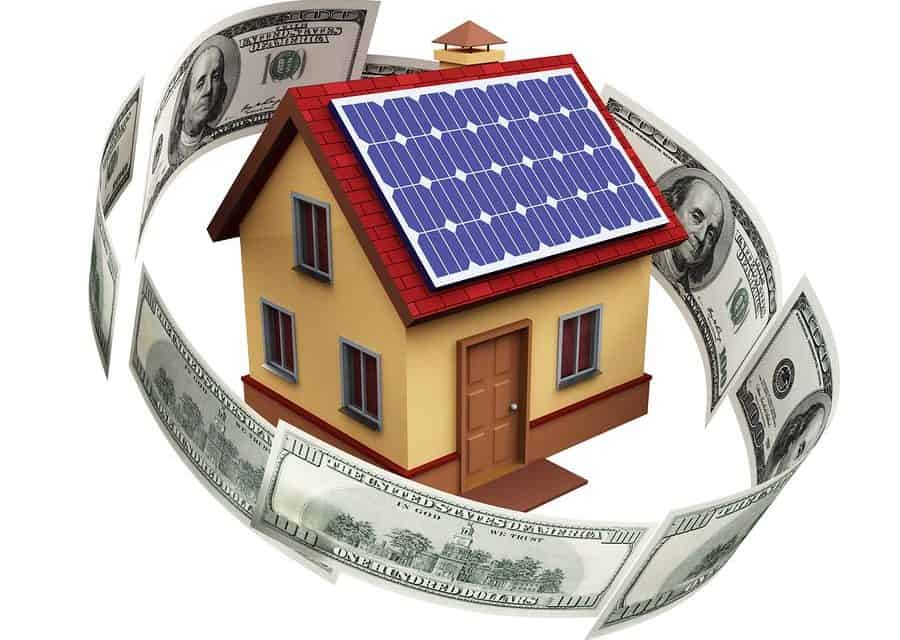I recently sat down with my very own contractor (and husband), John Cox, and had an interview about the latest home he built with all its energy saving features. Having just finished this home for David Ehrke and Cheryl Erwin on the Peninsula of Lake Almanor, he had a lot of information about what could be done to save energy in new construction and where to find that information. And because there is little building taking place at the moment, due to the state of our economy, he also filled me in on what can be done during remodels of older homes.
Solar Energy
The most impressive part of the Ehrke home, energy wise, is its solar energy system. There are two types of solar installations for homes. The solar electric system, also known as Photovoltaics (PV), generates electricity for the household. Using solar panels to convert sunlight into clean DC electricity, an inverter then converts it into AC so that it can power household needs. A utility meter tracks the solar electricity produced and fed to the utility grid. This gives the homeowner credit toward his electric utility bill for the electricity generated
In the Ehrke house, this meter keeps track of electricity production on a monthly basis and at the end of the year, he will be credited the amount he generated against what he used.
The second type of solar energy is called Solar Thermal. This solar system includes either vacuum tubes or flat panels that produce enough energy to meet 70-80% of a household’s needs for hot water. A solar water heating collector uses heat from the sun to warm the water flowing through it and sends this heated water to the storage tank. Solar thermal is used not only to heat water, but can be used with radiant floor systems to provide space heating by running hot water through pipes under the floor boards, or as the most cost-effective way to heat an outdoor pool. There are both active systems, with pumps to regulate and move water, or passive systems without pumps.
Generous government incentives bring down the costs of the initial capital outlay by as much as 30%. The California Cash Rebate offered through the CA Solar Initiative, allows rebates of 25-30% off total installed solar systems. A Federal Tax Credit is offered to any homeowner who installs a solar system, which is applied to their tax liability–not just a tax deduction–for the year installed. Solar systems also add significant resale value to your house and in CA are exempt from state property reassessment tax.
Local companies can assist you in this process as well as help you determine the best way to utilize solar energy in your home.
Radiant Floor Systems
Mentioned above as a way to use solar thermal, radiant floor systems are generally more cost effective for new homes. These systems can be used to heat sections of a house while closing off the heat to other sections. The heat is even and creates comfortable rooms without drafts or cold spots. It allows for lower thermostat settings and warm floors in winter. If properly designed, the water temperature is kept at 125′ to prevent damage to wooden floors. The Ehrke’s system heats the water with both solar and an on-demand water heater.
Energy Saving Window Treatments
The Ehrkes chose Pella windows with wood trim for their home. These windows are top of the line for several reasons. Thirty percent of a home’s heating and cooling can be lost through its windows. As a result, windows deserve the most attention in the house.
Today’s windows are more technologically advanced. Instead of the single or double panes of old, set in their metal frames, the best, high efficiency windows may now have two, three or even four panes, have been coated to reflect heat, have inert gasses pumped between the panes, and have frames that resist heat loss. Today, wood, fiberglass, vinyl or aluminum-clad wood window frames are less conductive than aluminum and perform better with less heat loss.
Fenestration is a word meaning an opening in a building. These include windows, doors, and sky lights. The National Fenestration Rating Council is a non-profit, public and private organization that provides accurate, standardized information to consumers, making it possible to measure and compare the energy performance. Look for the NFRC label on the windows. This label gives ratings for the following: U-Factor, a measure of how well heat is transferred by the entire window–lower the number the better; SHGC (Solar Heat Gain Coefficient), a measure of the window’s ability to transmit warmth from sunlight–lower number means less heat getting through and lower air-conditioning costs during hot months; Visible Light Transmittance, a measure of how much light gets through–a higher number means more natural light in your home. These labels also have numbers for air leakage and condensation resistance. The California Energy Commission Website at www.consumerenergycenter.org is a valuable source for further information.
Tax Credit Available: Through the American Recovery and Reinvestment Act of 2009, homeowners who have installed replacement windows between Jan 1, 2009 and Dec. 31, 2010 can receive a tax credit of 30% of the window’s cost (not including installation), up to $1500. The windows must be installed in pre-existing homes and have a U-factor and SHGC rating of 0.30 or less. Keep all documentation on any remodeling or construction that improves the energy efficiency of your home such as insulation, heating, ventilation, or air-conditioning for further tax credits. Help can be found at www.replacement-windows.com/energy-star-tax-credit.php. Or at www.energystar.gov. Also see Rebates From LMUD (this issue of MVL) or check out your local Utility Company for other rebates and savings.
Additional information on solar energy courtesy of www.solardepot.com












